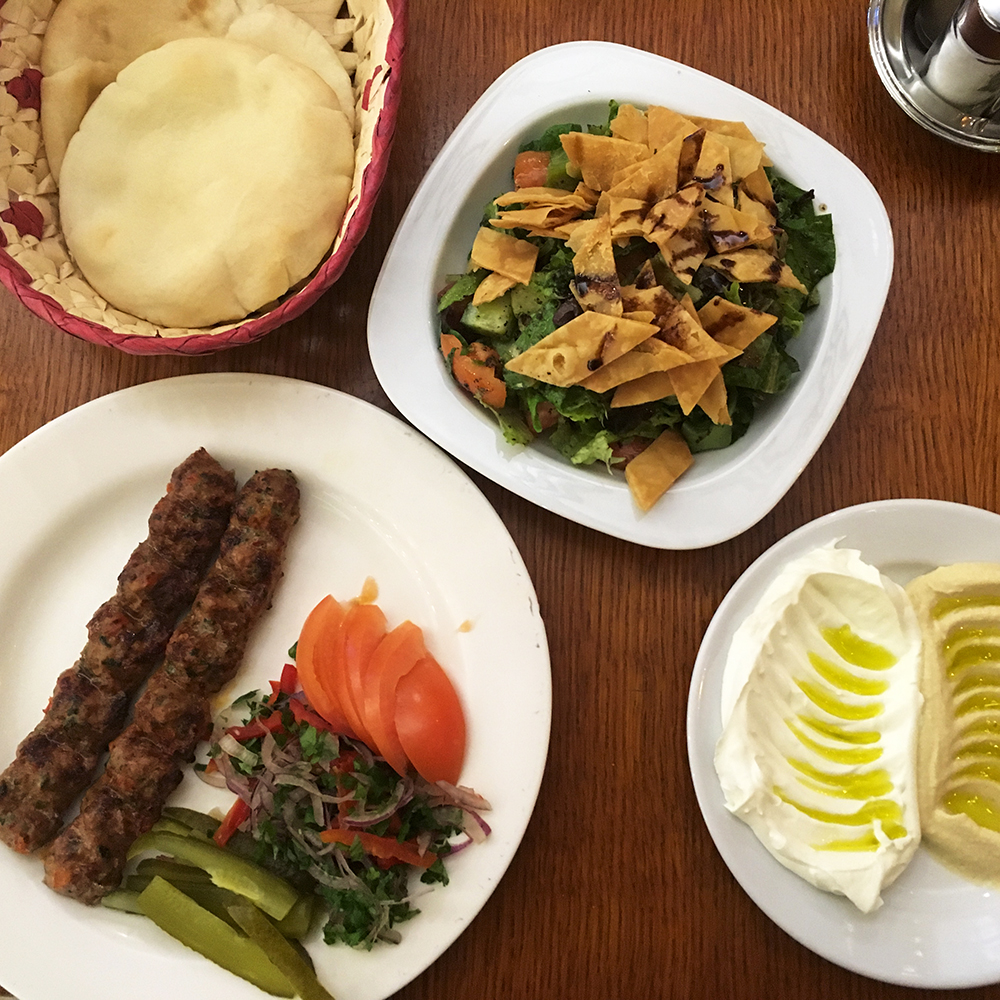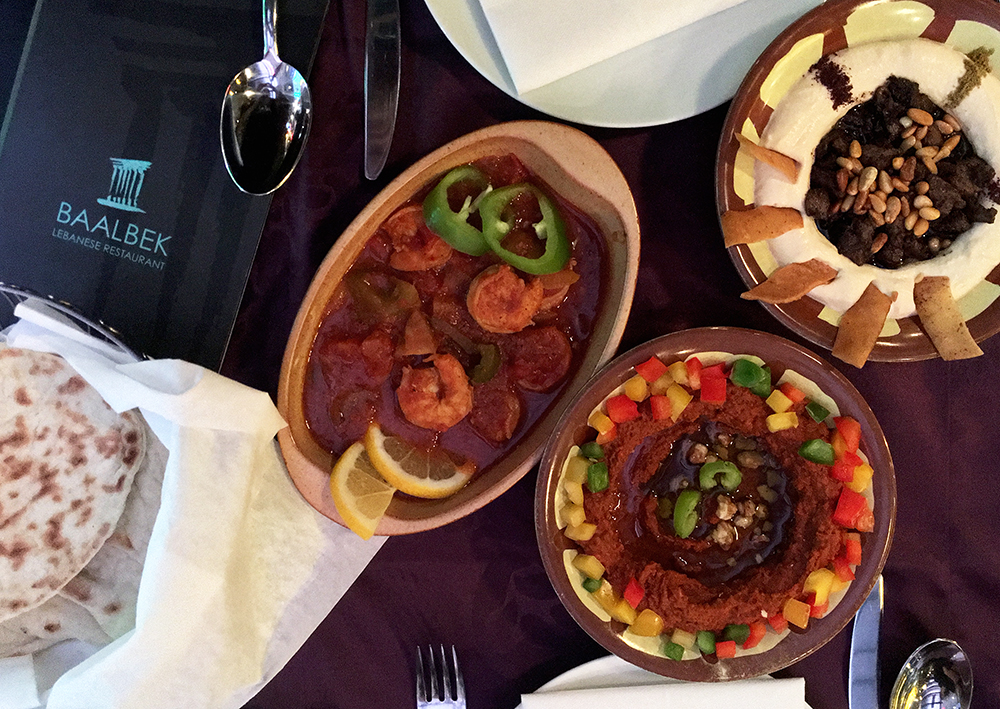The refugee crisis is the most divisive and the most passionate topic these days. I’m really tired of all the debate and I imagine I’m not the only one. These past few years I’ve dedicated a big part of my free time to my hobby which is to get as many people as I can to know and to fall in love with the reinterpreted gypsy cuisine. This may be a cliché but I truly believe that food can be a bridge between cultures. It is the fastest and simplest way to get to know each other. And getting to know each other is fundamental to dispelling fears. This is exactly why I considered the mission to seek out restaurants run by those who fled from warzones to be the most exciting task I had to do in a long time. So put your fears aside because this is an article about the best authentic Middle Eastern restaurants you can find in Budapest.
Cradle of the gastro-culture
A significant part of the refugees coming to our country arrive from the Middle East. If someone wants to immerse themselves in the gastronomy of the region they have to sift through almost as many complications and cultural interaction as if they were doing the same thing with the politics and history of the region. Empires and nations rose and fell or just simply intermingled. If we want to grasp the true characteristics of Middle Eastern cuisine we have to acknowledge that it has its roots in old Persia. Onto this foundation new layers were deposited with the cultural hotpot that was known as the Ottoman Empire. Russia and the New World (thanks to the Moorish nations of the Iberian Peninsula) also played pivotal roles in adding layers to the previously mentioned foundation. The region, of course, doesn’t present itself as a whole – there are a huge number of specialties that are native to one region or another.

This incredible heritage and the many outside influences merge in the kitchen which radiates some indescribable ancient power. Technologically it’s not very complex but thanks to extensive spice usage we get sophisticated, clean, and harmonious dishes. It’s not hard to see now that I’m somewhat biased on this topic. The ingredients and the spices both are very close to me and my all-time favorites are: lamb, figs, dates, chickpeas, sumac, cumin, sesame seed, and pomegranate.
These are all readily available in Hungary nowadays. This and some bad experiences are the main reason why I choose to make these dishes myself but with the help of Migration Aid, we visited three trustworthy places where we tried the region’s cuisine. The common denominator with these three is that they all lack native Hungarian guests and there was one where they didn’t even bother with making a Hungarian menu. There were however super friendly and helpful servers, unbelievably good dishes and fabulous flavors.
Al-Amir Restaurant – Syria
The previous four decades of the country were characterized by the Asad Regime but in 2011 the Arab Spring reached Syria. Very simply put: the chain of events started with peaceful demonstration and now five years later we have witnessed bloody and shocking events like the recent siege of Aleppo. Meanwhile, more than 13 million people are in need of humanitarian aid. Millions were forced to flee their homes to find shelter in Syria or in outside its borders.
At first glance, I didn’t expect the little restaurant near Szervita square to be a jewel. The interior is not too ostentatious, it has more of a chop house vibe, but the food here will make up for all of its shortcomings. Perfect hummus, dense, creamy, and fresh labneh. I only ordered half portions of these and they arrived topped with pleasant and refreshing olive oil. All is as it should be. The lamb kebab is tender and seasoned to perfection. The fettus ( salad served with fried flat bread and sumac) was made more exciting with pomegranate molasses. Finely prepared dishes, good flavors at an average price that is more on the cheap side if take into account our surroundings. Two people can eat a multi-course lunch or dinner for under thirty dollars.

Al-Amir Restaurant – lamb kebab, hummus and labneh, fettus with pomegranate molasses
(Photo: Budai Zsanett)
Baalbek Lebanese Restaurant – Libanon
The country with a population of only 4.4 million people became independent after World War I. Before that they were part of Syria so it’s not a surprise that their cuisine is very similar to theirs. There are some who say there are no differences at all. This is the only country in the region that has a tradition of restaurant crawling. Restaurant goers will often only have mezzas for hours on end. And according to these traditions, the Syrian chef at the little place on the corner of Váci and Kígyó Street excels in these small dishes. We recommend you try as many as you can so it’s advisable to arrive with a big group of friends. Of course, I couldn’t pass on the hummus here as well, but it was less puritan here. I chose the one with lamb meat and pine nuts and it can cause serious addiction. Their menu also features a more intense Beirut hummus. They all come served with heavenly flatbread. Paprika sauce with walnuts, prawns with cumin and tomato sauce, puff pastry filled with fresh cheese and their harira is to die for! I’ve met with this dish already in Morocco. That was a soup that can be found on every corner there. I know it’s weird but the harira I had in Morocco doesn’t even compare to this one. Apart from a lot of lamb meat, it was filled with cardamom. From the three restaurants, this one is the coziest. Despite the bright terrace, hookah and the perfect service the place is not too expensive. Two people can have a lunch of mezzas for a price of 50 dollars, tips included.

Baalbek Lebanese Restaurant – lamb meat and pine nut hummus, paprika cream with walnut and prawns with cumin and tomato sauce
(Photo: Budai Zsanett)
Darband Restaurant – Iran
More than half the population of Iran identify as Persians. Even their official language is Persia, namely Farsi. We can easily walk by the little restaurant operated by a Persian chef on Szemere Street if we don’t pay attention. Descending into the cellar it becomes obvious that we’re not dealing with an average place. This is made clear by the mosaic covered tables and the Farsi signs everywhere. The appetizers are served with lavash (a bread slightly thinner that the usual khubz). Both types of eggplant are amazing, but the third mayonnaise dish comes as a surprise and not in a good way. The kebab is a must at these kinds of places and this one doesn’t disappoint either. It’s a mix of beef and lamb and we can taste the natural flavor of the meat and spices perfectly. But we find the true specialty while browsing the Persian dishes. The gorme sabzi officially unphotogenic. It’s a green meat ragout with tons of green spices and black or dried lime. It’s quite a challenge to eat above 30 dollars here with two persons at the table.

Darband Restaurant – left side: lavash with two types of eggplant and mayonnaise sauce, right side: lamb and beef mix kebab
(Fotó: Budai Zsanett)
Middle Eastern food dictionary
Flatbreads: We can call them pitas but the official name is khubz, khoubz, or khobz.
Mezze: a Small dish that is closely related to what we know as appetizers. The difference is that a full meal can consist of several mezzas and can take hours. Hours and hours. There are cold and hot varieties, they usually serve the cold ones first.
Hummus: Thick cream made from chickpeas, garlic, tahini (sesame seed paste) and lemon. It may sound easy but it’s only easy to mess up. Most of the time it’s not smooth enough.
Labneh: Thick cream cheese made from drained yogurt.
Muhammara: Paprika paste with walnut.
Kofte, kebab (it can also be called kufta or kafta): A general term. Most of the time it means a dish made with meat. It can be ground meat but not exclusively. It’s usually roasted but this is not a requirement either.
Pilaf: Rice dish with spices and meat.
Kibbe: A mixture of lamb, bulgur, and onions that can be eaten baked, cooked or raw.





Write a comment
To write a comment you should sign in to with your account